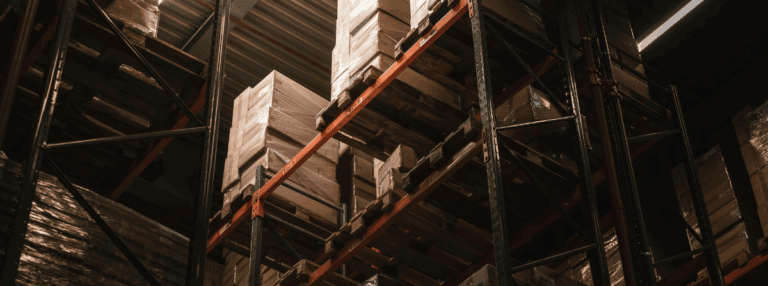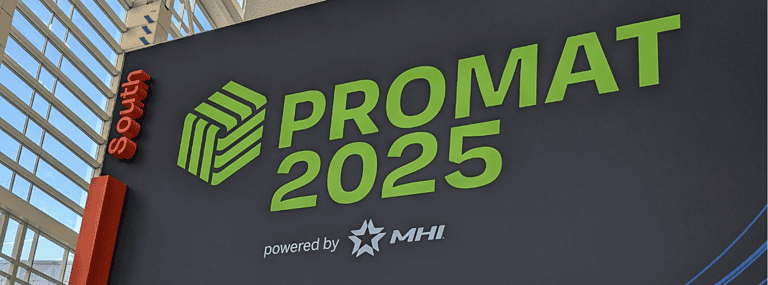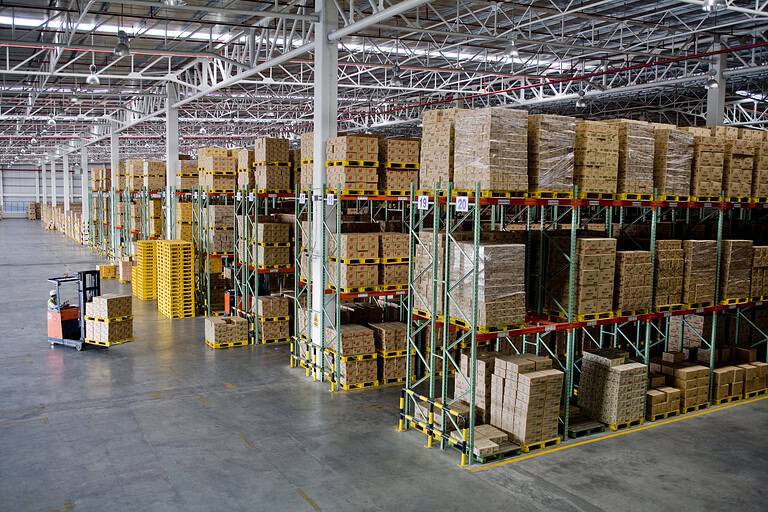Beyond the upfront sticker price: Why lithium-ion forklift batteries generate a long-term ROI
Doing the math can save thousands of dollars in energy and other operational costs—all while minimizing your carbon footprint
For many material handling managers, choosing the right forklift battery to propel their fleet often comes down to one major factor: price. At first glance, the sticker price of lithium-ion forklift batteries can seem steep compared to traditional options like lead-acid batteries.
However, this initial cost tells only part of the story. A closer look at the long-term benefits reveals that for the right application, investing in lithium-ion batteries not only saves significant energy costs but also drastically reduces tons of CO2 emissions.
Why are material handling teams converting to lithium-ion batteries?
An increasing number of material handling departments are making the transition from lead-acid batteries to lithium-ion batteries for their forklifts. Industry projections show that lithium-ion batteries will jump from a 10% market share as of today to an estimated 30% by 2030.
The benefits of lithium-ion batteries are compelling. They stand out for their exceptional energy savings compared to lead-acid alternatives. For example, lead-acid batteries generate approximately 80% efficiency when it comes to converting stored charge, which means that the roundtrip efficiency from the grid to the truck is around 57%. While slower charging and discharging rates can maximize efficiency, the fast-paced demands of material handling operations often necessitate quicker charging solutions.
On the other hand, lithium-ion batteries achieve an impressive 98% charging efficiency, significantly reducing energy losses from heat dissipation. As a result, their roundtrip efficiency reaches approximately 87%.
Lithium-ion batteries require less energy to recharge, thanks to their higher charge acceptance rates and reduced energy losses during the charging process. This inevitably means less heat losses and lower electricity costs over time, particularly for businesses running multiple forklifts and in areas where the costs per kWh are high. Furthermore, lithium-ion batteries are capable of opportunity charging—short, frequent recharges without negatively impacting battery health.
Lithium-ion batteries offer a distinct advantage with their compact charging infrastructure compared to lead-acid batteries. In 24/7 applications, lead-acid batteries require separate charging rooms equipped with ventilation systems to handle heat and fumes. Lithium-ion chargers are smaller, more versatile, and can be conveniently located throughout a facility. This space-saving design simplifies charging logistics and maximizes floor space for more business-critical operational needs.
Common misconceptions about lithium-ion forklift battery technology
Some companies have reservations about switching to lithium-ion batteries. Here, we debunk some of the most prevalent myths.
Fire hazards
Lithium-ion batteries raise concerns about fire risks due to their susceptibility to thermal runaway—a chain reaction caused by overheating, mechanical damage, or overcharging. Early designs lacked advanced safety features, making them susceptible to causing a thermal event. Still today, some manufacturers go to market with price attractive lithium products that don’t respect design best practices and safety certifications, so end users should be careful.
However, next-generation lithium-ion forklift batteries, like those developed by UgoWork, have been designed and tested according to the highest industry standards, including fire propagation safety. All UgoWork’s batteries hold the UL 2580 certification and are approved by major truck OEMs.
Performance
Some material handling teams may still believe lead-acid batteries perform better than lithium-ion batteries due to familiarity with reliability. Lead-acid technology has been the industry standard for decades, creating a comfort level and perceived dependability based on years of use. However, they may be unaware of the major innovations that have boosted the performance of lithium-ion battery performance for demanding forklift work. Continue reading on as we present a case study that reveals just how much money and GHG emissions a high-end lithium-ion forklift battery can save.
Another case in point: lithium-ion batteries significantly outperform lead-acid batteries in extreme temperature conditions. While lead-acid batteries suffer from reduced efficiency and faster degradation in both high and low temperatures, lithium-ion batteries maintain consistent performance across a wider temperature range. Their advanced chemical composition and thermal management systems enable them to function reliably in rugged material handling environments, such as cold storage warehouses or outdoor operations in extreme heat.
Sustainability
Historically, the challenge with lithium-ion batteries wasn’t necessarily the batteries themselves but the impracticality of recycling technologies and processes, which were neither economically viable nor energy-efficient.
Today, technology advancements are changing the landscape, enabling the recovery of up to 95% of critical minerals from lithium-ion batteries.
UgoWork sets itself apart by going beyond recycling with a complete approach to sustainable lithium-ion forklift battery management:
Energy-dense chemistry for high-value recycling
UgoWork uses an energy-dense Nickel Manganese Cobalt (NMC) chemistry, which is more valuable than Lithium Iron Phosphate (LFP) to build lithium-ion batteries. Recyclers often pay for NMC due to its higher recoverable value, making it a more sustainable and economically appealing choice.
A modular design for extended product lifespans
UgoWork’s lithium-ion batteries feature a modular design that allows the lithium packs to be disassembled and recycled. At the same time, the durable components—steel casing, electronics, BMS (Battery Management System), and harnesses—are reused for the lifecycle of a second lithium pack. This reduces waste and maximizes the lifecycle of the materials.
End-to-end sustainability management
Unlike many vendors who leave end-of-life management to their customers, UgoWork addresses sustainability at every stage. From ingenious battery design to promoting reuse and ensuring proper recycling, UgoWork takes care of everything, leaving customers to focus on what really counts: their material handling.
As for lead-acid batteries, they rely on lead, a toxic heavy metal, and their energy-intensive manufacturing process. While they are widely recycled, the recycling process can release harmful emissions and pollutants if not properly managed. Even more important, the frequent need to replace lead-acid batteries—owing to their shorter lifespan compared to lithium-ion batteries—results in higher resource consumption and waste generation.
The biggest misconception of them all: Total cost of ownership
Unfortunately, lithium-ion forklift batteries have gotten a bad rap for being more expensive upfront, leading material handling managers to overlook their true value.
This false impression stems from a narrow focus on initial expenses rather than evaluating the total cost of ownership (TCO). Of course, this is true when the material handling application is intense enough to benefit from lithium-ion’s performance.
While lead-acid batteries might seem more affordable initially, their hidden costs—frequent replacements, higher maintenance, and energy inefficiencies—quickly add up. In the end, the price tag is really just the beginning.
Lead-acid batteries have a significantly shorter lifespan compared to lithium-ion batteries, often requiring replacement after 1,000 to 1,500 cycles, depending on product models, usage and maintenance. Lithium-ion batteries typically last 2,000 to 3,500 cycles or more, offering double or even triple the longevity.

The TCO of lithium-ion forklift batteries also includes less tangible but equally critical benefits. Take maintenance costs. Lead-acid batteries come with high maintenance costs due to their need for regular watering, equalizing, and cleaning to prevent corrosion and guarantee performance levels. These tasks require time by team members who are not assigned to more value-added tasks. In contrast, lithium-ion batteries are maintenance-free, eliminating unnecessary spending and idle time.
Charge times with lead-acid batteries are longer, leading to costly downtimes. In contrast, lithium-ion batteries offer fast charging capabilities. Additionally, they eliminate the need for battery swaps; in fact, UgoWork’s batteries can be charged from 0 to 85% in just 1 hour.
Lead-acid battery performance also declines with low states of charge, whereas lithium-ion batteries retain maximum performance throughout any level of state of charge, as illustrated below. This helps material handling teams maintain their throughput and service line agreements with clients.

The occupational safety risks and insurance costs associated with lead-acid batteries cannot be underestimated. In addition to exposing workers to potential injuries, chemical burns, and toxic fumes during maintenance, lead-acid batteries create another hazard: the handling of heavy loads. Changing a lead-acid battery requires removing the depleted battery from each forklift using specialized equipment or an overhead crane. This process increases the potential of operator injury as well as adds wear and tear to the forklift itself, as heavy movements within the battery compartment end up damaging it.
Lithium-ion batteries are sealed and maintenance-free, eliminating the need for such risky handling. Lithium-ion technology offers a safer and more efficient alternative for material handling operations by decreasing safety hazards, productivity loss, and liability risks.
But how does all this play out in the real world? UgoWork put together a business case with a recent customer. The proof of lithium-ion forklift batteries’ potential is in the numbers.
Use case
One of our 3PL customers, based in Texas, has a fleet of 50 Class 1 trucks. We conducted an 8-year assessment of the company’s current lead-acid battery setup costs and the return on investment (ROI) if it shifted to UgoWork’s lithium-ion batteries. It is worth noting that in this use case, lead-acid batteries had to be replaced every 4 years, whereas lithium-ion batteries have an 8-year lifespan under the same conditions.

Based on the electricity costs at the client’s location, we were able to further break down the cost distribution between the two battery technologies as follows:

As you can see, despite the upfront investment in lithium-ion forklift batteries, the client would save approximately USD $2,9 million over 8 years—or 56% of the costs incurred with lead-acid batteries. Here is the year-by-year ROI comparison between the two types of batteries. Gains from a decrease in the number of forklifts needed and labor are not included, implying that the ROI could be even higher.

In a scenario where the customer would finance the purchase of the equipment, or go for UgoWork’s Energy as a Service business model, a return on investment would materialize at year 0 as presented on the chart below.

Proactive energy management: Your cost-control driver
As the numbers show, thinking long term definitely pays. But what if we could take cost savings even higher? UgoWork’s energy management platform and services with our customer success managers are proving to be game changers to trim overhead. By proactively monitoring battery performance levels and state of health, our innovative approach allows clients to easily manage:
- Fleet right-sizing: With better insights, many material handling managers can actually reduce the number of forklifts they need for a specific application or boost throughput with the same number of trucks by choosing lithium-ion batteries
- Charge scheduling: Planning and managing when batteries are charged to align with periods of lower electricity demand or lower rates
- Load balancing: Distributing energy demand across multiple batteries to avoid overloading systems or triggering peak demand charges
- Peak shaving: Developing a strategy to reduce energy consumption during periods of peak demand by shifting non-essential loads to non-peak times
- Demand response: Adjusting energy consumption during peak demand periods in response to utility signals or incentives
All of these steps can contribute massively to scaling back on equipment, labor and energy costs.
Conclusion
When the material handling application is right, converting to lithium-ion forklift batteries is a hidden advantage that can positively impact a company’s profit margins. Lithium-ion batteries deliver a lasting ROI with superior energy efficiency, lower environmental impact, and reduced maintenance needs. Imagine what you could do with those savings…
Interested in an UgoWork forklift battery assessment for your operations? Contact us today.




